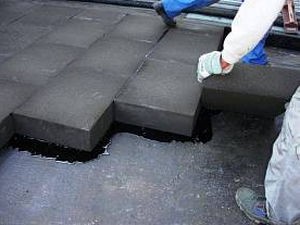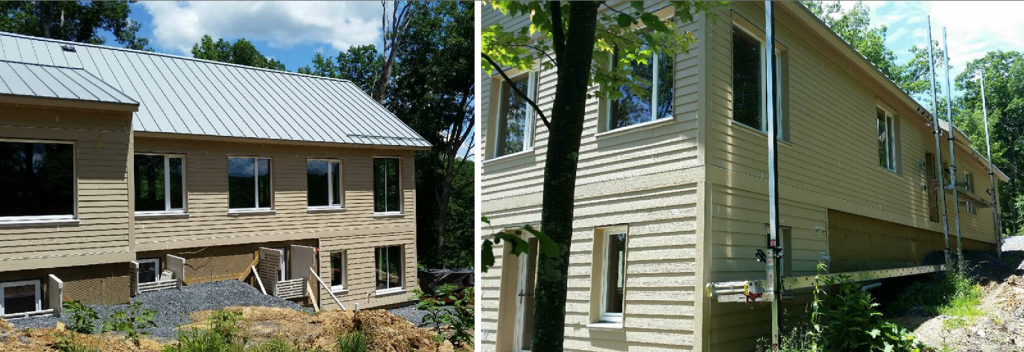Foam-Free Assemblies

One of the most eye-opening seminars for me at the recent North American Passive House Conference was a talk by Carri Beer (Brennan+Company) and Michael Hindle (Passive to Positive) titled “Foam Free Assemblies for a Net Zero Passive House in Western Maryland”. Michael spoke with great passion about the importance of material selection criteria other than pure energy savings, such as toxicity and GWP (global warming potential). A paraphrased synopsis of the seminar is given below, but you can read Michael’s opinions directly on his website.
The Passive House standard is focussed solely on ultra-low energy consumption, and does not give any consideration for other environmental or social effects as do some other environmental building rating standards, such as LEED or the Living Building Challenge. In this age of advanced technology and space-age materials, it is very tempting to use these to their fullest advantage to achieve the goal of building a certified Passive House; however, Michael reminds us that reduced energy consumption, while important, does not necessarily need to come at the expense of other environmental imperatives.
Looking at insulation specifically, petro-chemical foam-based insulations generally deliver the highest R-values per inch, but come at a huge environmental cost. Many of the foam insulations (EPS, XPS, polyisocyanurate, polyurethane, etc.) have some combination of high embodied energy, global warming potential, ozone depleting potential, persistent environmental toxicity, potential adverse effects on occupant and environmental health, reduced performance over time, etc. All these factors have an impact on the health of the planet and all its creatures (including us): climate change, islands of garbage in our oceans, hazardous chemicals that will persist for millennia, obscure toxins registering in even the most isolated human populations, and so on. Can we justify all of this in the name of improved energy efficiency for our buildings?
Fortunately, there are building products that can achieve our goals of energy efficiency that have greatly reduced environmental costs relative to the industry standard foam plastics. As an example, Michael and Carri presented a recent project called the Birdhouse, constructed in western Maryland. They have generously made their building details available on their respective websites and the Green Building Advisor. Some of the highlights are:
Sub-Slab Insulation – Rather than using the industry standard EPS or XPS, a mineral fibre board was used (Roxul Rockboard 80). One recommendation they had was to use a Roxul product that was tougher and had a higher compressive strength. At Greening Homes, we are proud to report that we have been using Roxul CIS in place of XPS as our standard sub-slab insulation as of August 2015. Other alternative insulations for this application are perlite, vermiculite, Foamglas, etc.
Insulated Footing – One of the most challenging locations to insulate is under the footing, as this requires a material with sufficient compressive strength. Generally this material would be high-compressive strength EPS or XPS; however, in this case a product called Foamglas was used. As its name suggests, Foamglas is a cellular glass insulation; it has high compressive strength, will not burn, is resistant to rot, mould growth and insect attack, and does not contain chemical binders or use any chemical blowing agents. Looking at the project details, Foamglas is used in place of concrete block to create a thermal break in the foundation wall and beneath the footing. One possible improvement on the footing detail could be leaving the footing out of the thermal envelope and having the foundation wall start on top of the footing with a block of Foamglas.
Cellulose – The walls and roofs were insulated with cellulose, a material which is widely recognized as the best environmentally as it is made from recycled wood fibre and has the lowest embodied energy of any insulation.
Thank you Carri and Michael for reminding us to look beyond R-value per inch and for sharing your details and product knowledge so that we can all make changes for the better. At Greening Homes, we have really taken this talk to heart as it is very much in line with our core values, and are always working on making the most informed material choices on all our projects.

